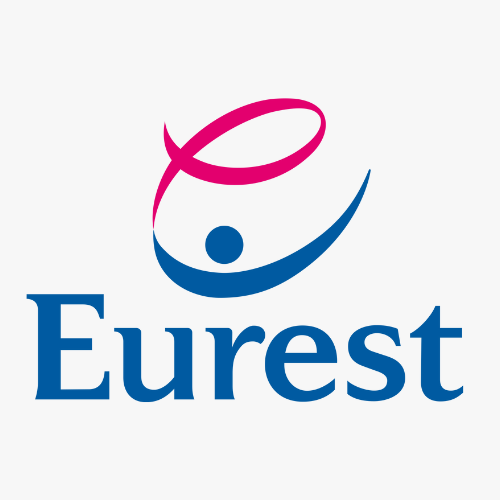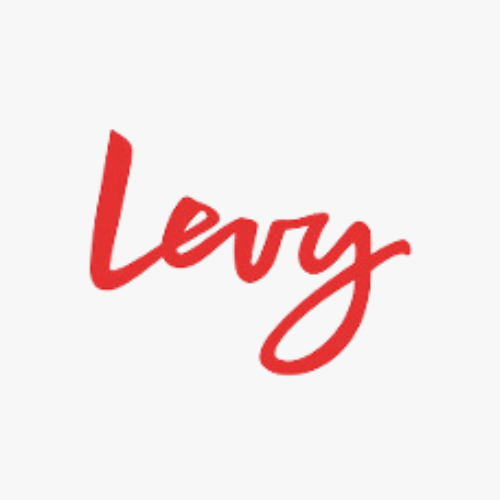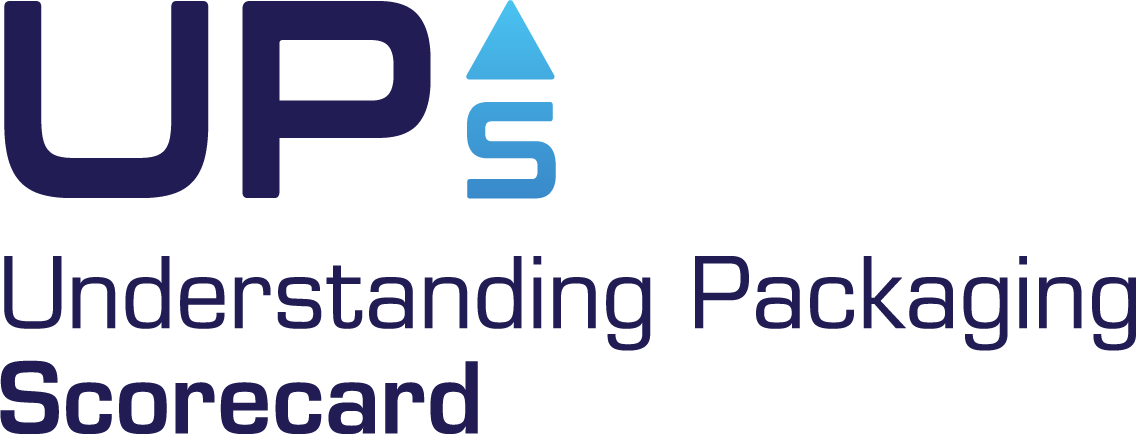Case Study
How Compass Group USA uses the UP Scorecard to drive sustainability across the food service sector

About Compass Group USA
If you have dined in college quads or hospital dining rooms, ballparks or museums, school cafeterias or corporate cafés, airport lounges or senior living communities in the US, chances are you have dined with Compass Group USA. They are the nation’s largest family of foodservice and facilities services companies, serving more than 11 million meals and maintaining more than 1.9 billion square feet a day. Compass Group has a long-standing commitment to the well-being of customers, communities, and the planet.
Making single use packaging more sustainable is incredibly complex with trade-offs between each material type. In co-creating the UP Scorecard, we recognized the opportunity to bring the voice and insights of our operators who use the tool in making purchasing decisions. Our goal was to develop a tool that is easy-to-use and can be integrated in our daily procurement and client conversations and quickly scale with clients who can make the highest impact. The UP Scorecard does just that.
Marissa Golison, Director of Sustainability for Compass Group USA

Aim & Expected Impact
Process: As the world’s largest foodservice company, Compass Group has unique expertise that comes from extensive experience operationalizing across large systems. This has enabled them to quickly elevate and scale the understanding of sustainable packaging which has been a large piece of Compass Group’s sustainability strategy — and is now even easier with the UP Scorecard. In the last year, Compass Group has added the UP Scorecard as a new resource to educate business leaders, operators, and chefs on sustainability and safety of their food packaging. Compass Group employees then in turn engage clients in conversations about the tradeoffs of the different packaging types and what changes can be made to help realize their sustainability goals.
Outcome: In the first year of using the UP Scorecard, Compass Group has reached 150 of their highest impact clients, educating business leaders and empowering them to make more thoughtful and responsible sustainability decisions.
UP Scorecard demonstrations provide technical life cycle data necessary to evaluate the wide range of packaging solutions available in a foodservice operation. Through the UP Scorecard, Compass Group provides clients consistent and transparent packaging data, backed by science, leading NGOs and industry groups.
Executive Summary
Compass Group is committed to reducing single use materials and create a circular economy. Single use packaging is part of their daily conversations with both internal teams and clients. Compass Group saw value in leveraging a tool that simplifies life cycle data to make decisions about packaging.
Addressing the challenges of single use materials requires a multifaceted approach, including reducing consumption, promoting reusable alternatives, aligning with local recycling and composting facilities, and public awareness campaigns to shift behaviors towards sustainable alternatives. The UP Scorecard is a simple yet comprehensive tool for making sustainable purchasing decisions based on the latest available science.
Compass Group has scaled the use of the UP Scorecard to 150 of their clients and continues to empower business leaders to make thoughtful and responsible decisions with easy-to-use tools and data. In only 12 months, Compass Group has successfully influenced behaviors toward a circular economy for packaging leveraging the UP Scorecard.
Results: Facts & Figures
One year. 150 high-impact clients reached. That’s the equivalent of using the UP Scorecard three business days a week. In these presentations, Compass Group has worked with its partners to evaluate scenarios and analyze data, prompting provocative discussions on how to make the most impactful sustainable packaging decisions.
Out of the 150 clients across 18 Compass Group sectors, 9 industries were represented
- Business & Industry
- Education
- Healthcare & Senior Living
- Sports & Entertainment
- Facilities & Support Services
- Vending
- Hotels & Conference Centers
- Purchasing
- Convention Centers & Cultural Attraction
Developing a sustainable packaging strategy looks different based on the underlying goals of the client’s sustainability initiatives. While some clients are looking for carbon reduction, some are focused on reaching zero waste or on removing all single use plastics. Depending on each goal, Compass Group refers to the UP Scorecard to create a preferred portfolio of products that fit the need of the client’s goals, food safety considerations, and aligns with the local waste infrastructure available.
Client Story #1
For one client, removing all single use plastics where possible has been the goal. Compass Group used the UP Scorecard to develop a disposables purchasing policy for the client. The policy includes a good, better, best, index that helps operators make informed decisions based on the clients’ goal. The steps the Compass Group team took in creating the index is outlined in the interactive graphic below:

UP Scorecard is used to
create a ranking of all
possible container
solutions for a given
use case
Client decides which
products are green (best),
light green (better),
yellow (OK for now),
and red (avoid)
Consider product
availability and costs;
make temporary
exceptions if necessary
Client is now in the
process of transitioning
millions of containers to
non-red listed solutions
-Reusables
-Unlined fiber products
with BPI or equivalent
certification
-Glass or aluminum
-Wood or bamboo
-Preference for sustainably
certified products
-PLA-lined fiber
products with BPI
or equivalent certification
-PLA lids if
fiber is unavailable
-Products made primarily
from plastic including
HDPE, PLA, PE, PS,
EPS, and bioPET
-Any product containing
added PFAS
Client Story #2
For another client, reducing carbon impact of beverage containers was a top priority. Compass Group educated the client on preferred packaging materials leveraging the UP Scorecard. While PET bottles have the lowest carbon impact, the UP Scorecard showed aluminum, glass, and cartons were better overall Therefore, the client decided to transition their beverage products to a combination of aluminum and glass products, amounting to 3.9 million plastic bottles removed annually.

Plastic leakage to the environment
Estimates the mass of plastic (in grams) that enters the environment due to the production, use, recycling, and disposal of the product. Expressed in grams of plastic per liter of product volume (plates and trays are expressed in grams of plastic per 200 cm2 of product area).
Presence of Chemicals of Concern and material inertness
A hybrid rating that indicates (1) whether the container is free of one or more tiered lists of chemicals of concern to be avoided based on human and environmental hazards, (2) the quality of the information used to support such a claim, and (3) the propensity of chemicals to migrate from the material into food and the environment. Scores that had to be approximated due to the limited availability of necessary underlying data in the public domain are visually marked as empty circles with a dotted outline.
Greenhouse gas emissions to the environment
Estimates the life cycle global warming impact of the product expressed in grams of CO2e per liter of product volume (plates and trays are expressed in grams CO2e per 200 cm2 of product area).
Water consumption
Estimates the life cycle consumptive use of surface and groundwater expressed in liters of water per liter of product volume (plates and trays are expressed in liters of water per 200 cm2 of product area).
Use of post-consumer recycled content and rewards for sustainable sourcing practices
A qualitative rating that recognizes sustainable forestry and agricultural production for bio-based materials and the use of post-consumer recycled content. All materials are ranked in one of five performance tiers.
Recovery potential
A qualitative rating that represents the likelihood for the product to be reused, recycled or composted. All products are categorized in one of five performance tiers.
Average of the six scores
The Summary Score is an (equal-weighted) average of the six metric scores. To calculate the rank, it uses all products in the use case, regardless of whether or not they were selected for comparison and are currently displayed in the results table.
Disclaimer: This scoresheet has been created using the UP Scorecard version 0.3.
Experience & Feedback
To gather feedback about the experience, we interviewed Marissa Golison, Director of Sustainability at Compass Group USA:
What has your experience been with using the UP Scorecard?
“Compass Group has been on its sustainability journey for quite some time. As our clients and operators become more educated on the impact of single use materials, they want to see the data of how different materials stack up against each other to make the right decision for their business and environment. The UP Scorecard has been influential in supporting the way we communicate about the impact of packaging internally to our operators and in conversations with clients. It is our experience that when we empower our business leaders with easy-to-use data to better understand the nuances of sustainability, we see increased engagement and eagerness to support both our clients and Compass Group’s sustainability programs.” -Marissa Golison
You have now been using the UP Scorecard for a year. What have you learned from working with this tool?
“With an increased focus on climate commitments across our business, it has been super interesting to see how the tool has resonated from industry to industry. It has also been great to see how the tool is useful not only within the procurement function of Compass Group, but for action-oriented discussions with clients. For those who may just be learning about the impacts of single use materials, it is helpful to point to the UP Scorecard and show what variables need to be considered when evaluating the right solution. Many of the conversations I have start by educating on why we need to consider more than carbon reduction in evaluating packaging. We need to consider the entire life cycle of products and potential chemicals of concern. The UP Scorecard helps us level set and makes these conversations even more productive.” -Marissa Golison
Compass Group USA also asked for direct feedback from business leaders who have leveraged the UP Scorecard:



Outlook
To continue progressing on their single use materials strategy, Compass Group will keep leveraging the UP Scorecard to educate operators and clients on the impact areas necessary to consider when developing a sustainable packaging program.
A key takeaway from Compass Group’s experience in using the UP Scorecard is that it is critical to provide education and easy tools to those who are making purchasing decisions at a location or who are involved in setting a sustainability strategy with the client.
To learn more about Compass Group’s sustainability efforts, check their CSR reports and website for latest case studies.
About UP Scorecard
We know that choosing the most sustainable option for your foodware or packing needs is complicated, but the UP Scorecard makes it easy. With a few clicks you can compare health and environmental scores for the most commonly used food container options and make the best choice for you, your customers, and the planet.
- Evaluate the human and environmental health performance of your container options.
- Show clients and customers why your choice matters.
- Enable suppliers to show how their product stacks up against the competition.
The UP Scorecard was build based on the following set of six core values for the tool to:
- Simplify and enable decision making
- Be science-based
- Incorporate multiple criteria
- Be developed using a multi-stakeholder approach
- Be and remain dynamic
- Be transparent
The UP Scorecard is being developed by SUM’D, which is a fiscally sponsored project of the Healthy Building Network (HBN), a registered 503(c) non-profit organization registered under United States law. The UP Scorecard is being hosted by the Food Packaging Forum Foundation. Life cycle assessment (LCA) services are being provided by Scope 3 Consulting, and technical development of the tool is carried out in cooperation with Frantic Software. The UP Scorecard uses ecoinvent as a data source.
Try out the UP Scorecard here on our website, download the full case study, or visit us on our social media channels!

About SUM'D
SUM’D is a non-profit, cross-sector group of leading food service companies, NGOs, and technical experts working together to reduce reliance on single-use materials in the food industry and minimize their impacts on health and the environment. SUM’D’s experts are behind the development of the Understanding Packaging (UP) Scorecard – a free, easy-to-use web-based tool to assess the sustainability impacts of common foodware and food packaging choices based on the latest available science.



